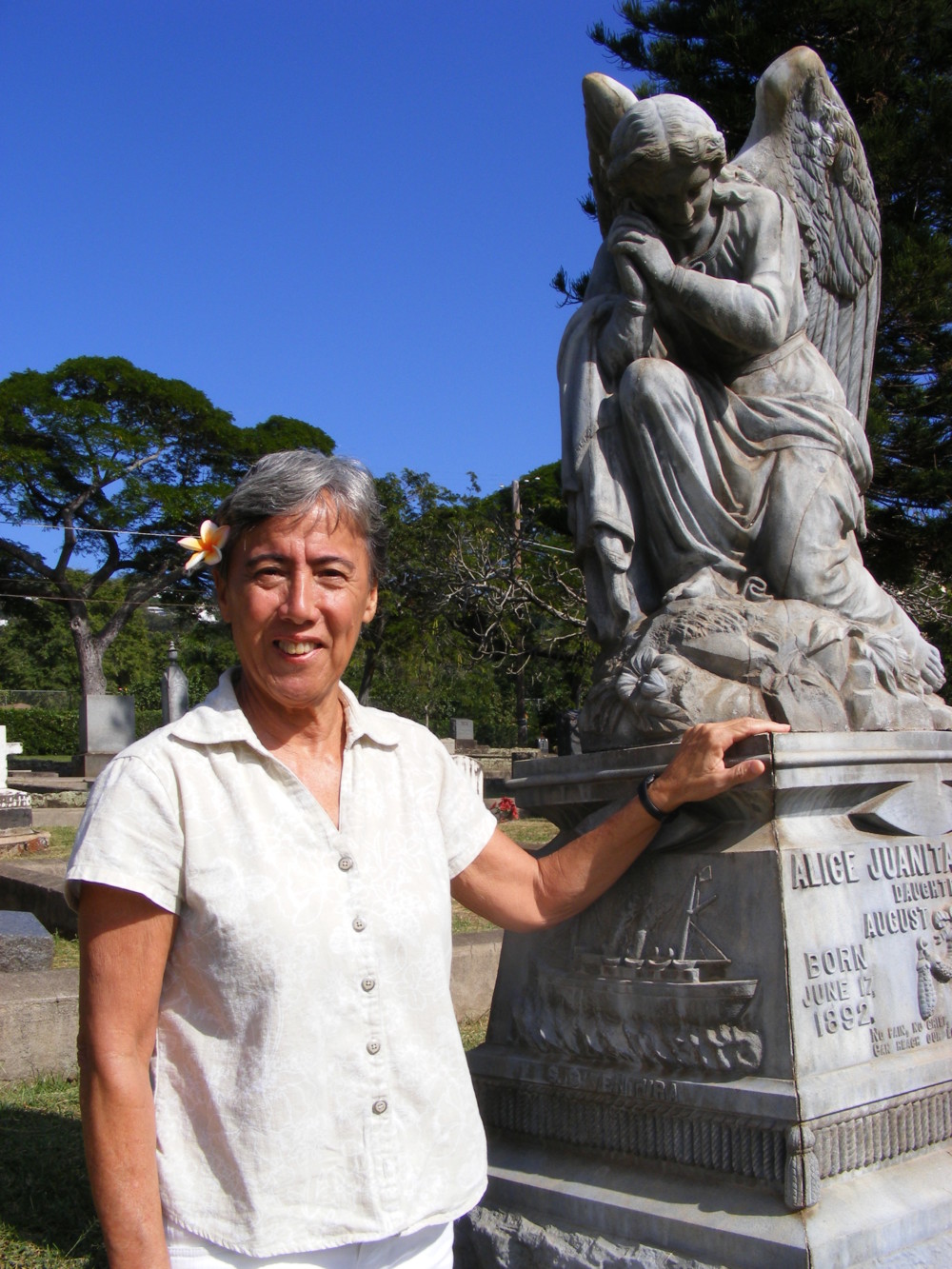“Preservationist Nanette Napoleon is considered Hawaii’s leading expert on graveyards. She’s the author and photographer of a book on Hawaii’s oldest public graveyard. She gives walking tours of the site and she supervised documentation of more than 300 graveyards and 30,000 tombstone inscriptions throughout the state.” (From PBS’s Long Story Short with Leslie Wilcox).
Historic Preservation and Sense of Place
By Nanette Naioma Napoleon
For me, historic preservation is one of the most important disciplines in our society today. Much of our cultural and historical identity rests in our ability to clearly see the value of preserving our historic and cultural sites, which define us as a unique multi-ethnic community.
Buddhist temples, heiau, plantation houses, military outposts, loʻi systems, Chinese society buildings, bridges, salt ponds, train tracks, fire houses, petroglyphs….they are all a part of our rich history and gives us a strong sense of place in the world and within our specific neighborhoods and communities. Without them, our man-made environment would become a bland reproduction of “Anywhere” America.
Of course for me personally, historic graveyards rank number one in terms of historic sites that should be appreciated as important historic, cultural and genealogical sites. I have spent the last 30 years of my life dedicated to the preservation of such sites through documentation projects, walking tours, lectures, onsite cleaning and maker restoration efforts, and a book about Oʻahu Cemetery.
Cemeteries give us a unique view of our past that no other historic site can. They preserve, in stone, the lives of tens of thousands of individuals, each of whom contributed, in their own unique way, to what we have become as a society today.
Family descendants and friends find much solace and a strong sense of connection to their loved ones while visiting burial sites. They provide much needed open space in increasingly urbanized communities. They give us an opportunity to contemplate our own inevitable demise and how we want to be remembered.
In short, cemeteries are not just functional repositories for the dead. They represent who we are as individuals and as a community. They are a physical manifestation of our innate need to memorialize the dead in a concrete way.
Unfortunately, cemeteries have developed a very negative connotation as “spooky, morbid” places with evil spirits hell-bent causing us harm. This is a relatively new psychological relationship with death and the dead. Prior to industrialization and urbanization in America, cemeteries and death were not seen as such negative places, nor was death farmed out to funeral homes and undertakers. Families prepared bodies, had wakes in their homes, dug the graves by hand and buried kin on family property, or in a nearby churchyard. Death was not something that people set themselves apart from, but rather they naturally and without hesitation took the death of a loved one on in a direct and personal way, without any thought that what they were doing was in any way morbid or spooky.
How times have changed. Now we relegate our dearly departed ones to funeral directors, crematory operators and grave diggers. We visit grave sites less and less. And when we do we have much more anxiety about lingering about the grave, least we be assaulted by our fears of death.
As a society we need to get over these fears so that we can truly appreciate the beauty, the dignity and the comfort that cemeteries can bring to us. So that we can open our minds to the fact that graveyards are wonderful outdoor museums, historic sites and genealogical resources which enhance our communities, not detract from them.
My hope is that the next generation of people will develop a greater appreciation for these sites and embrace the idea that cemeteries are for us, the living, and not only for the dead.


